
Crassula capitella ssp. thyrsiflora Roraima Nursery
Crassula Capitella Subsp. Thyrsiflora is known to be a stunning looking succulent. As the plant matures you can expect it to reach up to 20 cm (8″) tall. The plants main feature are the green leaves with red edges. When the plant finally produces white flowers form summer and fall. Scientific Classification Family: Crassulaceae

CRASSULA CAPITELLA SUBS. THYRSIFLORA
Crassula capitella subsp. thyrsiflora is a geometric wonder! This cool plant sports triangle-shaped leaves that grow around the stem, stacked on top of each other in a tall tower of succulent bliss. In order to achieve the red coloring, the plant needs LOTS of light and remember not to overwater.

Crassula capitella subsp. thyrsiflora (2" Pot) Little Prince To Go
Crassula Capitella Subsp. Thyrsiflora, also known as Red Pagoda or Shark's Tooth, is a succulent plant that belongs to the Crassulaceae family. It is native to South Africa and is a popular choice for indoor gardening due to its unique appearance and easy care. Taxonomic Information

Crassula capitella ssp. thyrsiflora Red Pagoda Mountain Crest Gardens
Crassula capitella subsp. thyrsiflora is a small, eye-catching succulent with pinkish-red rosettes that become stacked in a pagoda form and turn red. The stems grow up to about 8 inches (20 cm) long. The tiny, white flowers appear at the ends of unbranched spike-like inflorescences in summer and fall. Photo via flickriver.com by entireleaves
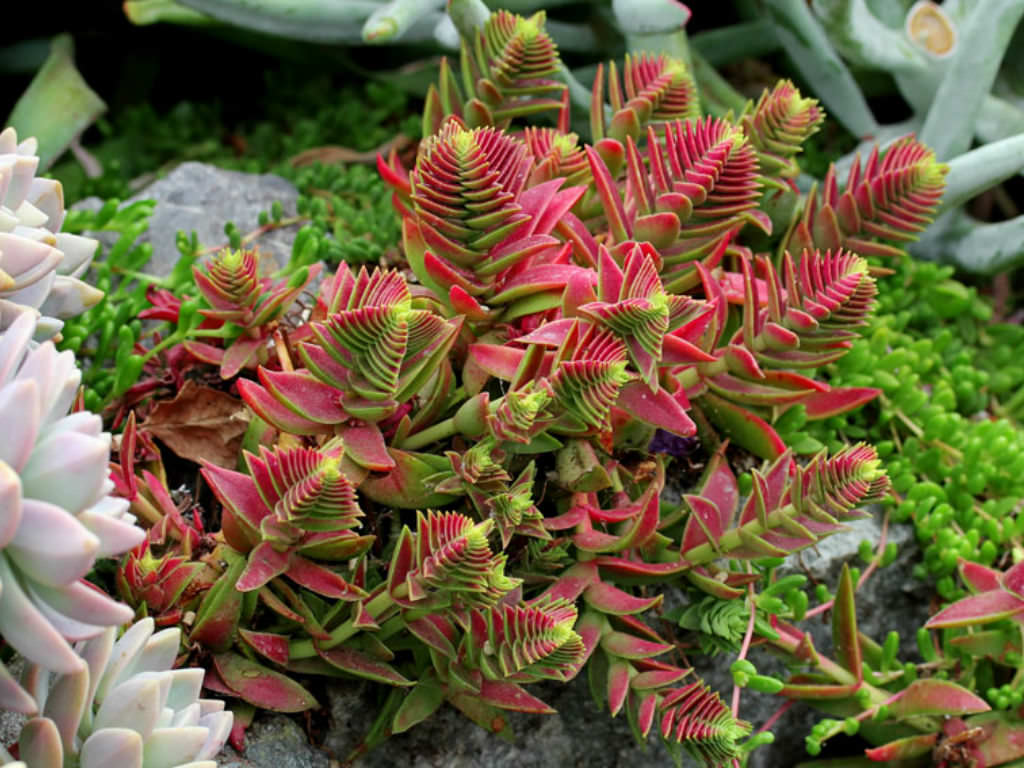
Crassula capitella subsp. thyrsiflora World of Succulents
Crassula capitella ssp. thyrsiflora is an evergreen cactus / succulent with red and green foliage and white flowers in spring and summer. It can grow 12 IN - 20 IN - wide, 6 IN - 10 IN - tall. To grow well, it prefers sun - bright shade and regular - low water. Drought tolerant once established. Prefers to be dry when dormant. Grows best in well-drained, lean, gritty and rocky soil.
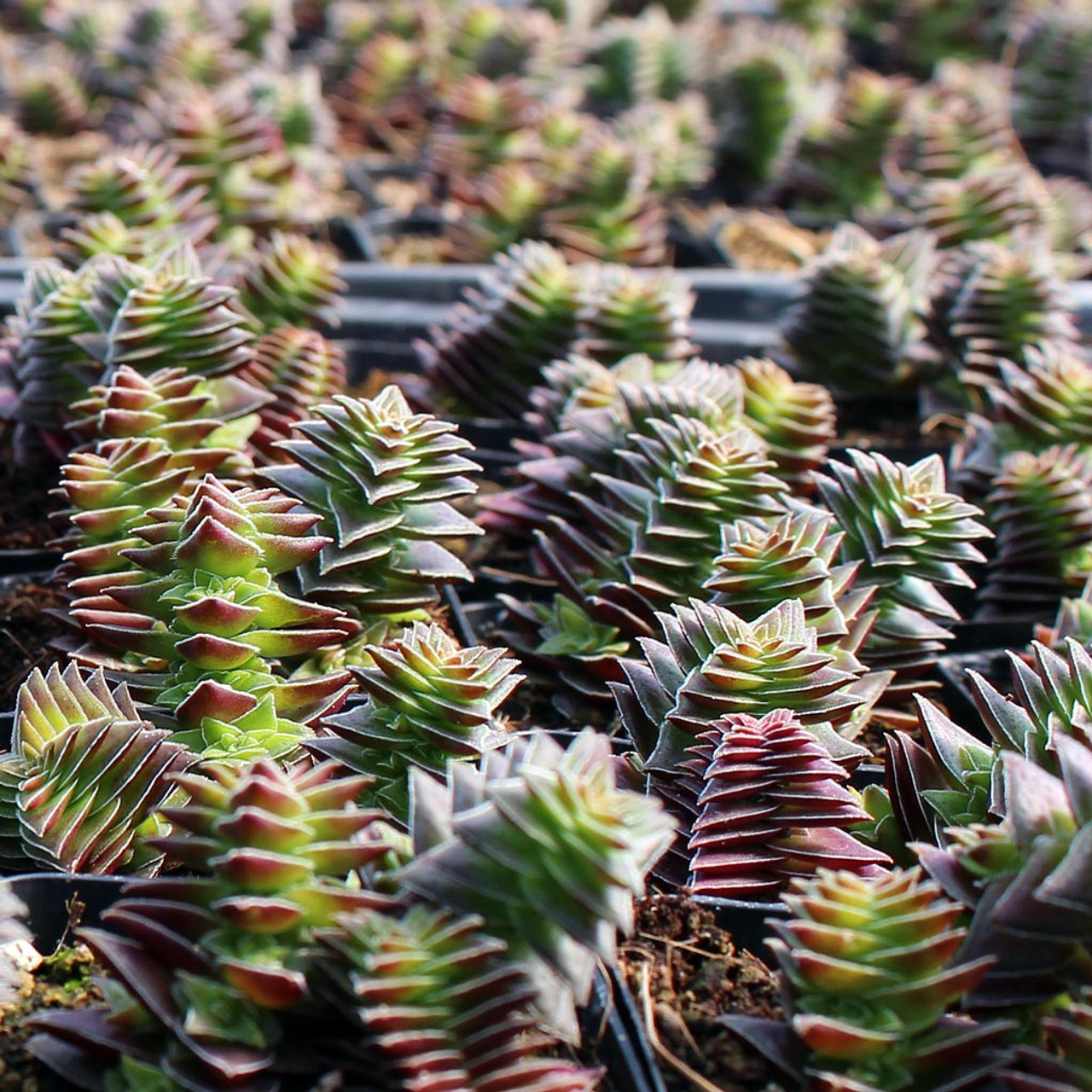
Crassula capitella subsp. thyrsiflora Red Pagoda Mountain Crest Gardens
Height: 6-inches (15cm) tall Exposure: 3 to 6 hours of sunlight; partial shade in the winter. Water Needs: Frequent watering in the summer; low watering in the winter. Soil Type: Cactus soil or a combination of loam, sand and potting soil. Soil pH: Acidic (5.0 to 5.5) Maintenance Requirements: Low Tolerance: Winter
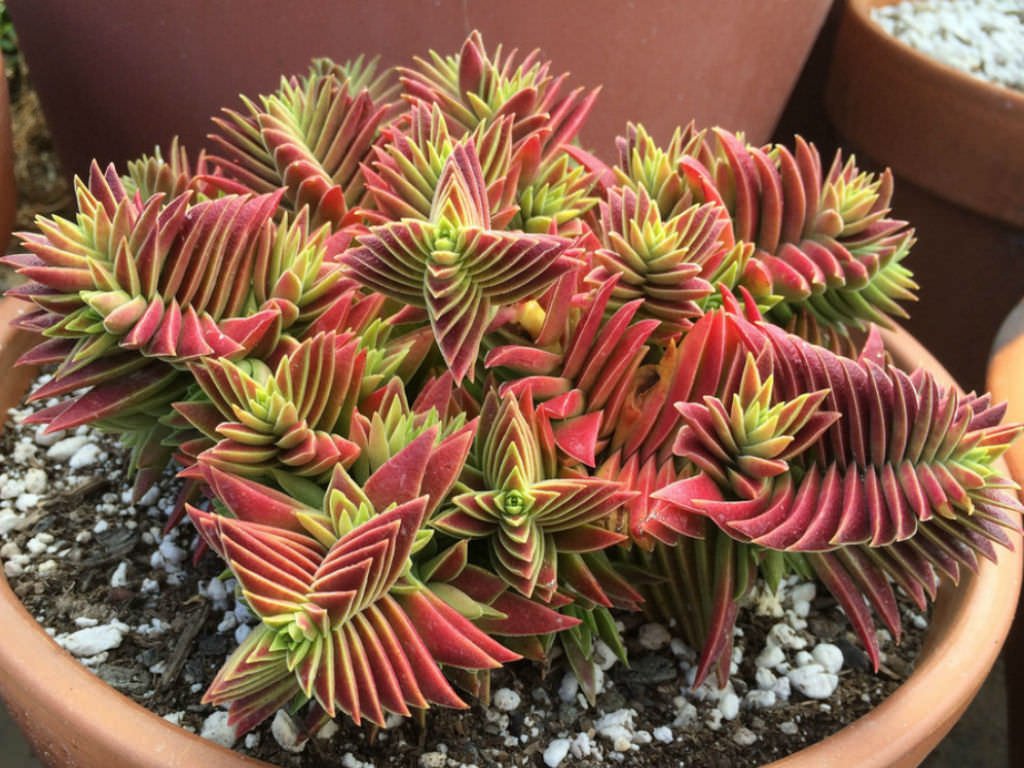
Crassula capitella subsp. thyrsiflora World of Succulents
This succulent thrives best in bright, indirect light. A spot near a south or east-facing window would be perfect. Source: Etsy If you notice your plant stretching or losing its compact shape, it might be time to move it to a brighter location. Remember, a happy plant is a well-lit plant! Crassula 'Pagoda Village' Watering Needs

Crassula capitella ssp. thyrsiflora Red Pagoda Mountain Crest Gardens
Background Crassula capitella subsp. thyrsiflora is native to South Africa where its long stems sprawl and form mats on dry, rocky slopes. Their leaves form a tower of red triangles which resembles a Red Pagoda hence its common name. These plants like full sun, warm temperatures, and low humidity. Growth Requirements Sun
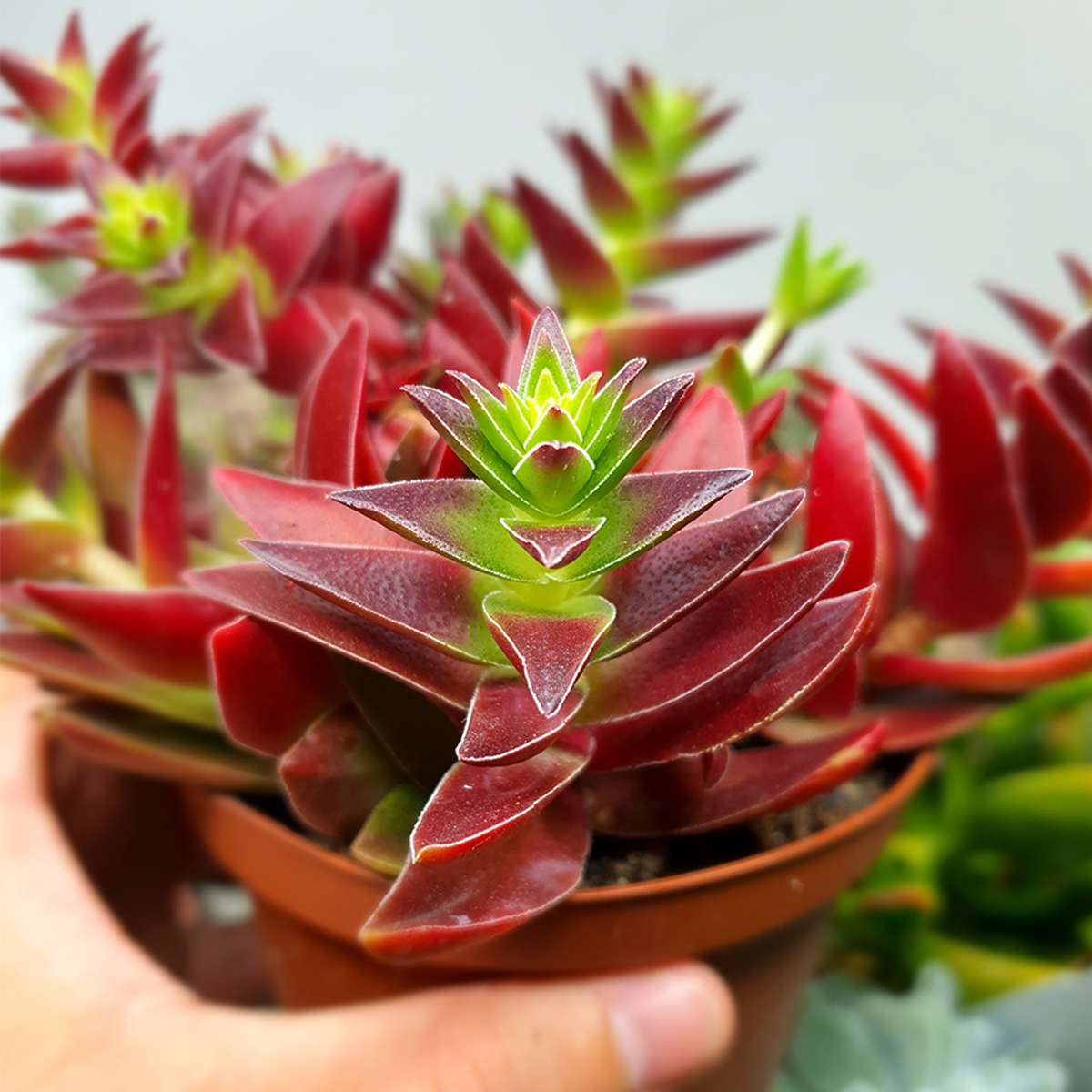
CRASSULA CAPITELLA SUBS. THYRSIFLORA
Description: Crassula capitella subs. thyrsiflora is a prolific and mat-forming perennials succulent with many branches of up to 0.4 m high when in flower (but often much smaller). The leaves are borne in rosettes and are sometimes neatly arranged in four ranks or sometimes in a spiral.
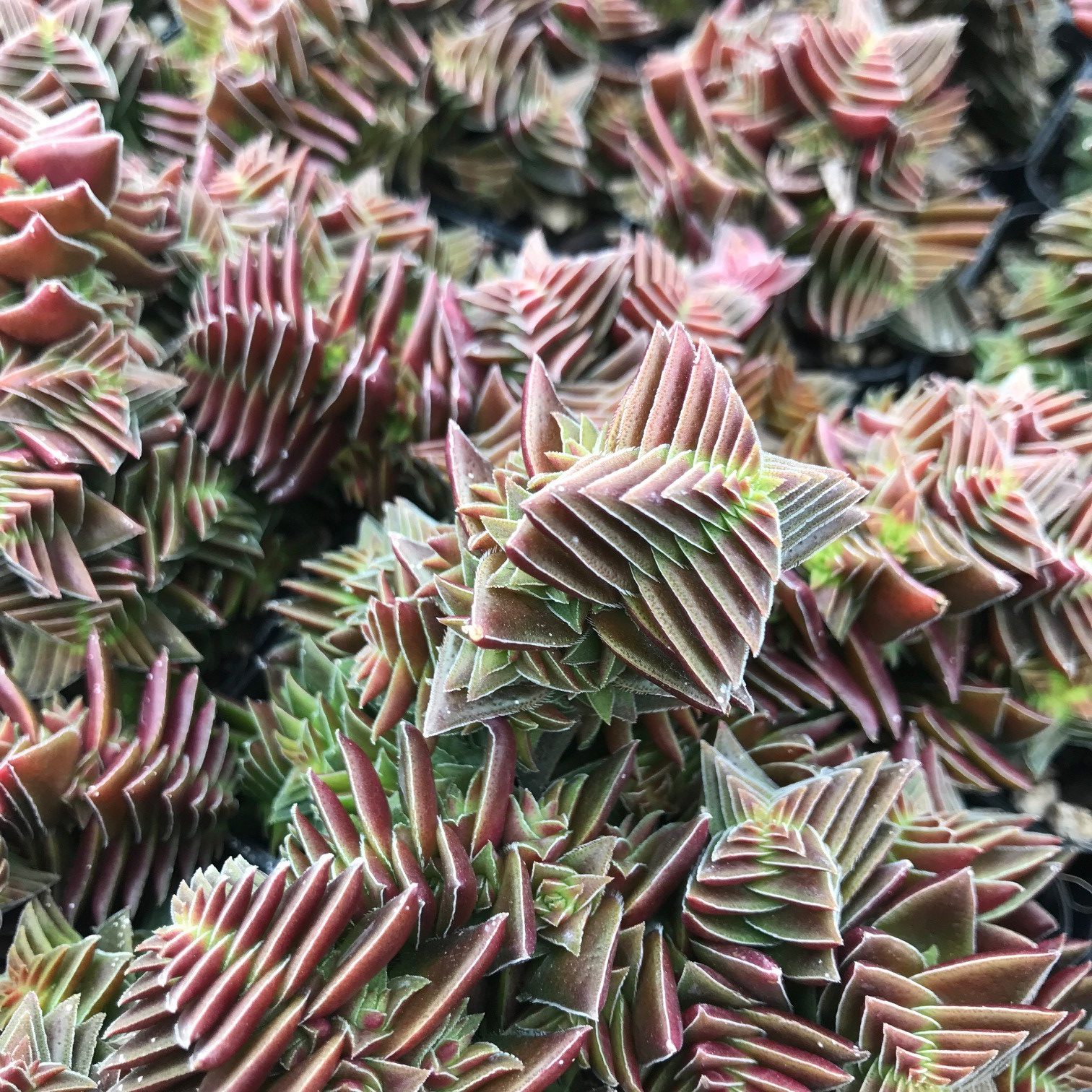
Crassula capitella subsp. thyrsiflora (2" Pot) Little Prince To Go
Last Updated on July 8, 2023 Crassula Sharks Tooth (Crassula capitella subsp. thyrsiflora) is a beautiful, low-maintenance succulent that's perfect for beginners. It's easy to care for and propagate, making it a great choice for those new to gardening. This succulent is native to South Africa and can be found in the wild growing on rocky outcrops.
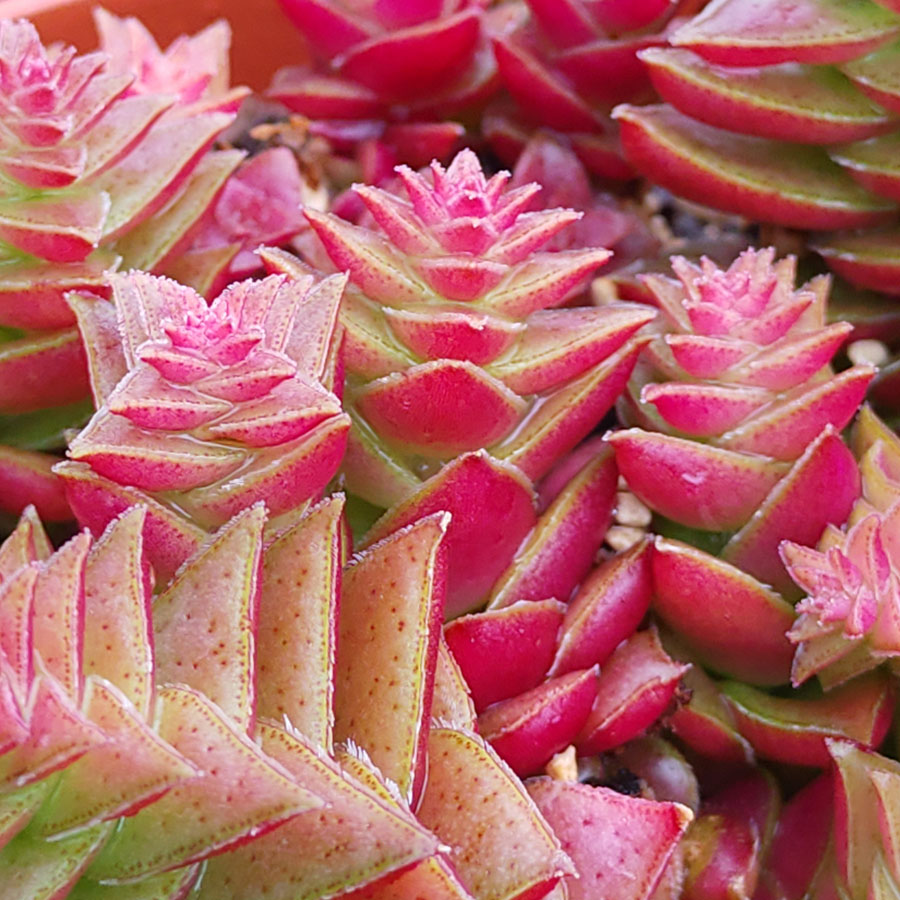
Crassula capitella thyrsiflora Cuttings
Crassula capitella subsp. thyrsiflora, commonly called Red pagoda, is a branching perennial succulent with fleshy, triangular leaves decorated with crimson tips densely stacked upon each other in a pagoda style. The rosettes are formed by the overlapping of smaller leaves over the bigger ones towards the tip.
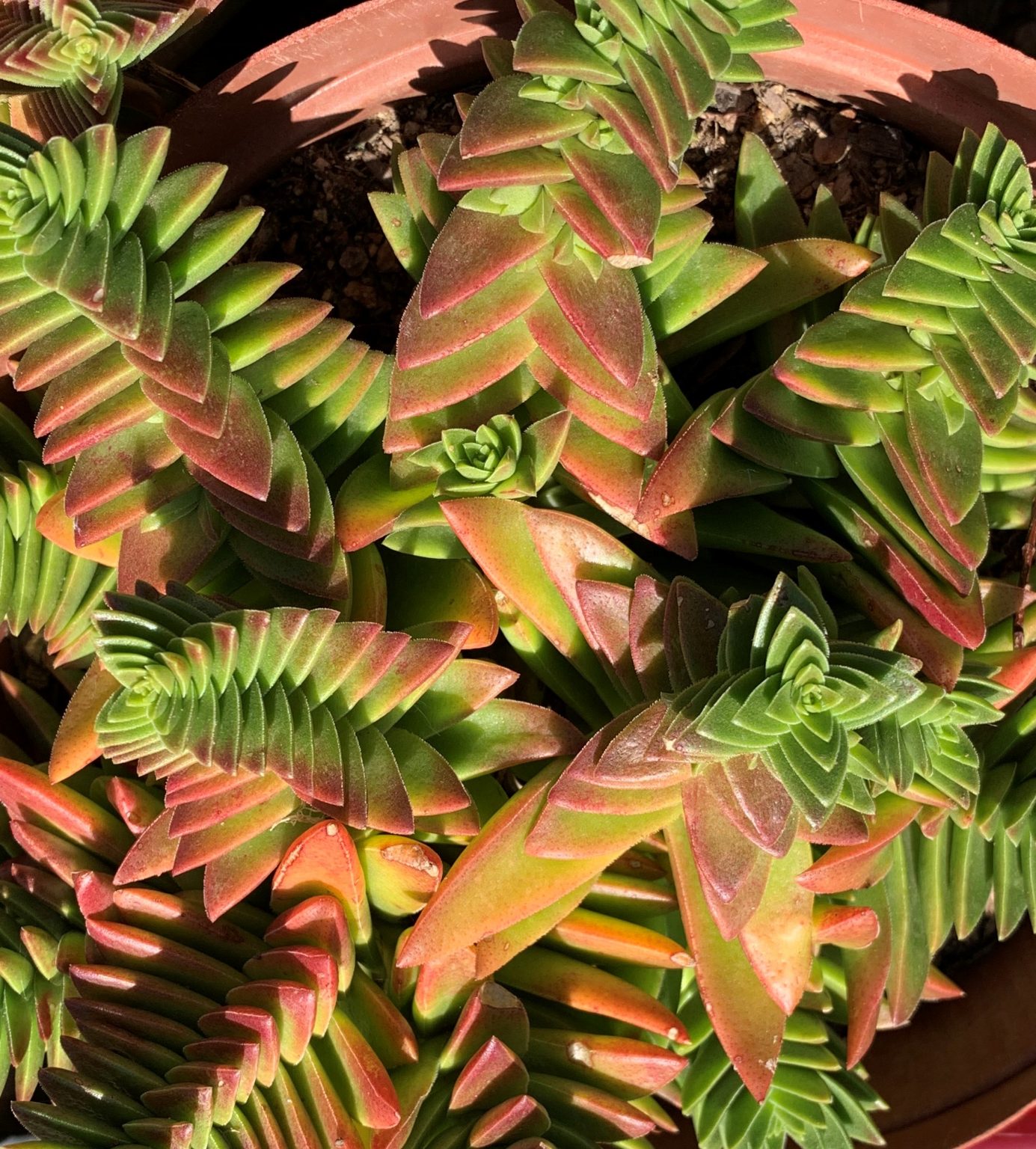
CRASSULA capitella subspecies thyrsiflora (Red Pagoda) Succulent Hyper
Crassula capitella subsp. thyrsiflora is an attractive, perennial succulent houseplant. Its looks like a pink-tinged rosette and then later the leaves become pagoda-shaped and turn red. The tiny, white flowers are up to 0.6 cm in diameter and appear at the ends of the up to 25 cm long, pagoda chains. Scientific Classification: Family: Crassulaceae
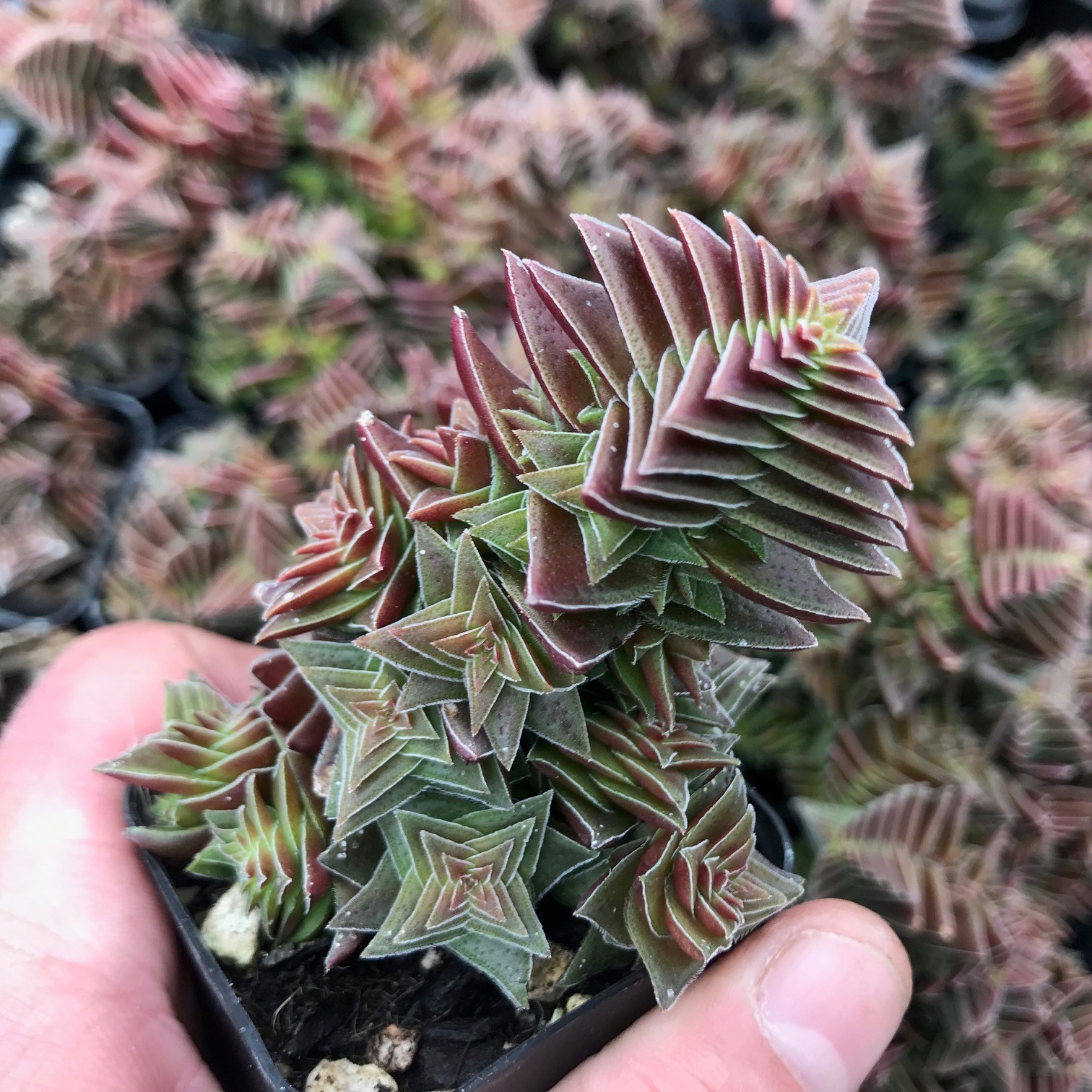
Crassula capitella subsp. thyrsiflora (2" Pot) Little Prince To Go
Crassula capitella thyrsiflora aka Shark's Tooth Taxonomy. Genus Crassula Family Crassulaceae Order Saxifragales Class Magnoliopsida Phylum Tracheophyta Common names. Shark's Tooth, Red Pagoda How to care for Shark's Tooth. Water. Shark's Tooth does best in dry soil and should only be watered sparingly.

Crassula capitella thyrsiflora Fonte das Suculentas
Diagnostic Description A very variable taxon which is distinguished from a number of similar species by its glabrous sepals which are rarely longer than 2 mm. Several local forms are distinguishable:1. Small plants with usually ovate leaves which are often 4-ranked, at least in the juvenile stage, occur widespread in the Great Karoo.

Crassula capitella ssp. thyrsiflora 'Pagoda Village' Buy Online at
Crassula capitella subs. thyrsiflora is a wonderful succulent belonging to the Crassulaceae botanical family. The plant is a perennial shrub, heavily branched that can reach up to 40 cm in height. The stem is short and the plant forms dense rosettes of leaves. The leaves are arranged in four ranks or sometimes in spirals.

Crassula Capitella Thyrsiflora Um Guia Completo Guia das Suculentas
From $2.70. Quick view. Crassula capitella subsp. thyrsiflora are part of the Crassulaceae family and are native to South Africa. They have rosettes that range from pink to red and eventually become red and shaped like a pagoda. During the summer and fall, there can be white flowers that grow.